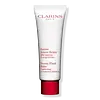What's inside
What's inside
 Key Ingredients
Key Ingredients

 Benefits
Benefits

 Concerns
Concerns

 Ingredients Side-by-side
Ingredients Side-by-side

Water
Skin ConditioningOlea Europaea Fruit Oil
MaskingAnthyllis Vulneraria Extract
Skin ConditioningHamamelis Virginiana Bark/Leaf Extract
AstringentAlcohol
AntimicrobialCetearyl Alcohol
EmollientGlyceryl Stearate
EmollientParfum
MaskingCitral
PerfumingLinalool
PerfumingFarnesol
PerfumingBenzyl Benzoate
AntimicrobialLimonene
PerfumingCitronellol
PerfumingGeraniol
PerfumingBenzyl Salicylate
PerfumingCoumarin
PerfumingEugenol
PerfumingAlgin
MaskingXanthan Gum
EmulsifyingSodium Citrate
BufferingSilica
AbrasiveBentonite
AbsorbentArachis Hypogaea Oil
Skin ConditioningMagnesium Oxide
AbsorbentAlumina
AbrasiveCI 75810
Cosmetic ColorantIron Oxides
Water, Olea Europaea Fruit Oil, Anthyllis Vulneraria Extract, Hamamelis Virginiana Bark/Leaf Extract, Alcohol, Cetearyl Alcohol, Glyceryl Stearate, Parfum, Citral, Linalool, Farnesol, Benzyl Benzoate, Limonene, Citronellol, Geraniol, Benzyl Salicylate, Coumarin, Eugenol, Algin, Xanthan Gum, Sodium Citrate, Silica, Bentonite, Arachis Hypogaea Oil, Magnesium Oxide, Alumina, CI 75810, Iron Oxides
Water
Skin ConditioningCaprylic/Capric Triglyceride
MaskingGlycerin
HumectantButyrospermum Parkii Butter
Skin ConditioningPropanediol
SolventC15-19 Alkane
SolventSilica Silylate
EmollientAmmonium Acryloyldimethyltaurate/Vp Copolymer
Sorbitan Stearate
EmulsifyingPolyacrylate Crosspolymer-6
Emulsion StabilisingButylene Glycol
HumectantHydroxyacetophenone
AntioxidantParfum
MaskingAvena Sativa Kernel Extract
AbrasiveEthylhexylglycerin
Skin ConditioningTocopheryl Acetate
AntioxidantAloe Barbadensis Leaf Juice Powder
Skin ConditioningDisodium EDTA
Sucrose Cocoate
EmulsifyingHydrolyzed Opuntia Ficus-Indica Flower Extract
AbrasiveSodium Hydroxide
BufferingMarrubium Vulgare Extract
Skin ConditioningSodium Benzoate
MaskingT-Butyl Alcohol
Perfuming1,2-Hexanediol
Skin ConditioningCaprylyl Glycol
EmollientMalpighia Emarginata Seed Extract
Skin ConditioningPhenethyl Alcohol
MaskingCapsicum Annuum Fruit Extract
AntimicrobialFurcellaria Lumbricalis Extract
Skin ConditioningCI 14700
Cosmetic ColorantLapsana Communis Flower/Leaf/Stem Extract
Skin ConditioningMaris Sal
Skin ConditioningHelianthus Annuus Seed Oil
EmollientTocopherol
AntioxidantRosmarinus Officinalis Leaf Extract
AntimicrobialWater, Caprylic/Capric Triglyceride, Glycerin, Butyrospermum Parkii Butter, Propanediol, C15-19 Alkane, Silica Silylate, Ammonium Acryloyldimethyltaurate/Vp Copolymer, Sorbitan Stearate, Polyacrylate Crosspolymer-6, Butylene Glycol, Hydroxyacetophenone, Parfum, Avena Sativa Kernel Extract, Ethylhexylglycerin, Tocopheryl Acetate, Aloe Barbadensis Leaf Juice Powder, Disodium EDTA, Sucrose Cocoate, Hydrolyzed Opuntia Ficus-Indica Flower Extract, Sodium Hydroxide, Marrubium Vulgare Extract, Sodium Benzoate, T-Butyl Alcohol, 1,2-Hexanediol, Caprylyl Glycol, Malpighia Emarginata Seed Extract, Phenethyl Alcohol, Capsicum Annuum Fruit Extract, Furcellaria Lumbricalis Extract, CI 14700, Lapsana Communis Flower/Leaf/Stem Extract, Maris Sal, Helianthus Annuus Seed Oil, Tocopherol, Rosmarinus Officinalis Leaf Extract
Alternatives
Ingredients Explained
These ingredients are found in both products.
Ingredients higher up in an ingredient list are typically present in a larger amount.
Parfum is a catch-all term for an ingredient or more that is used to give a scent to products.
Also called "fragrance", this ingredient can be a blend of hundreds of chemicals or plant oils. This means every product with "fragrance" or "parfum" in the ingredients list is a different mixture.
For instance, Habanolide is a proprietary trade name for a specific aroma chemical. When used as a fragrance ingredient in cosmetics, most aroma chemicals fall under the broad labeling category of “FRAGRANCE” or “PARFUM” according to EU and US regulations.
The term 'parfum' or 'fragrance' is not regulated in many countries. In many cases, it is up to the brand to define this term.
For instance, many brands choose to label themselves as "fragrance-free" because they are not using synthetic fragrances. However, their products may still contain ingredients such as essential oils that are considered a fragrance by INCI standards.
One example is Calendula flower extract. Calendula is an essential oil that still imparts a scent or 'fragrance'.
Depending on the blend, the ingredients in the mixture can cause allergies and sensitivities on the skin. Some ingredients that are known EU allergens include linalool and citronellol.
Parfum can also be used to mask or cover an unpleasant scent.
The bottom line is: not all fragrances/parfum/ingredients are created equally. If you are worried about fragrances, we recommend taking a closer look at an ingredient. And of course, we always recommend speaking with a professional.
Learn more about ParfumWater. It's the most common cosmetic ingredient of all. You'll usually see it at the top of ingredient lists, meaning that it makes up the largest part of the product.
So why is it so popular? Water most often acts as a solvent - this means that it helps dissolve other ingredients into the formulation.
You'll also recognize water as that liquid we all need to stay alive. If you see this, drink a glass of water. Stay hydrated!
Learn more about Water